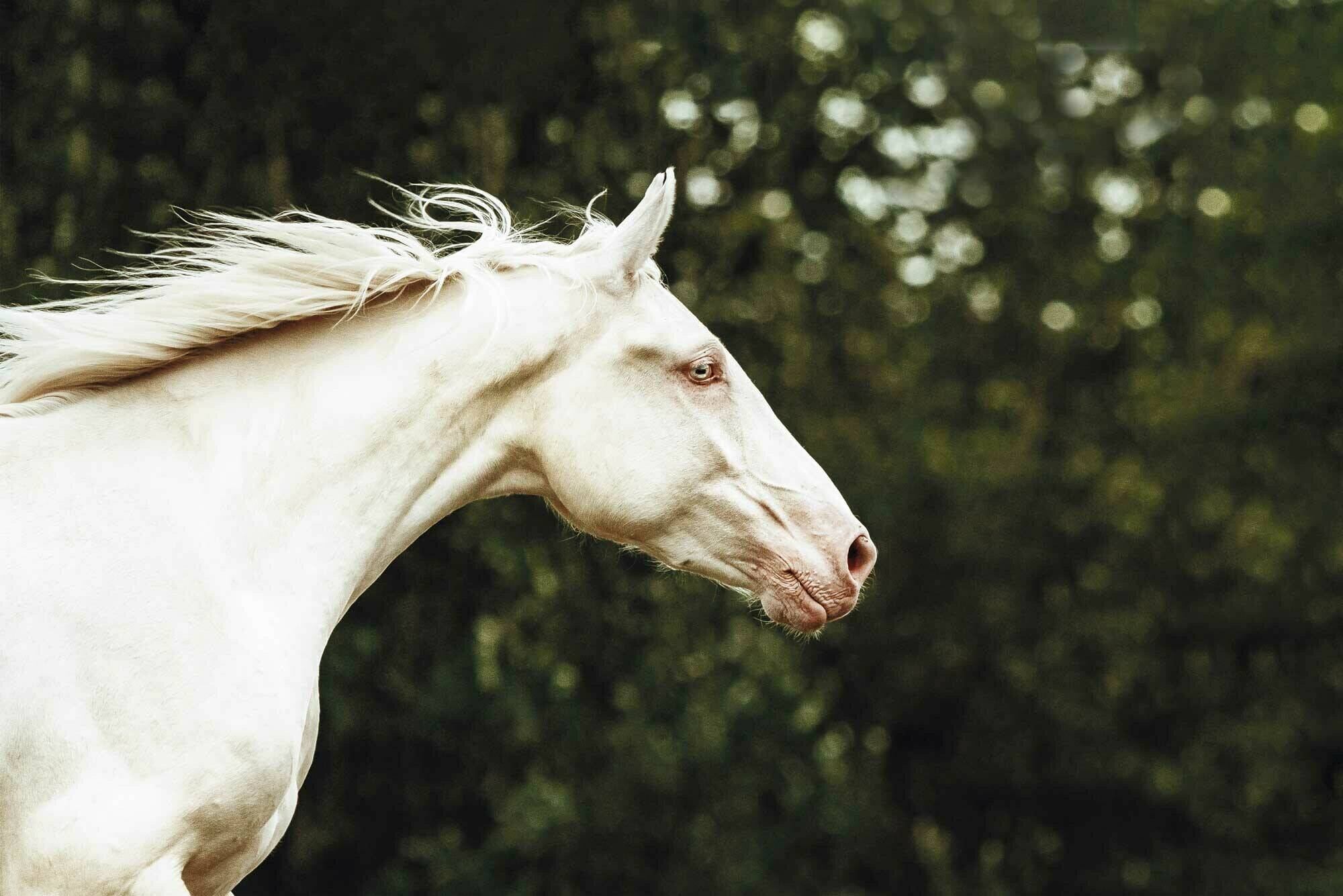About the photographer
Website: VictoriaBinderPhotography.com
Facebook: @VictoriaBinderPhotography
Instagram: @Victoriaphotographing
By Tina Bjerre Nielsen // Photo: Victoria Binder Photography
Borrelia is a disease that can be difficult to identify. Often one cannot figure out what is wrong with the horse, but you can just see that something is wrong. There are in fact many different symptoms that may resemble the symptoms of other disorders besides Lyme disease.



Can do great damage
Despite their size, ticks can do great damage to horses as well as humans. Ticks thrive particularly well in slightly humid environments, where it is not too hot and shady – for example a forest, but bogs and meadow also provide good living conditions for ticks. The small creatures are often to be foundin tall grass, where they feed onblood from other animals – unfortunately including humans and horses.
Once a tick carries the borrelia bacterium, the tick can easily pass it on to animals as well as humans. It sucks blood from the host animal and can then potentially transmit the bacterium further from here to another animal – for example horses.
It is important to emphasize that a tick bite in itself is rarely a problem, as there is no guarantee that the tick will carry Lyme disease. It will often take many tick bites before it will affect a horse in any other way, if the tick does not carry Lyme disease.
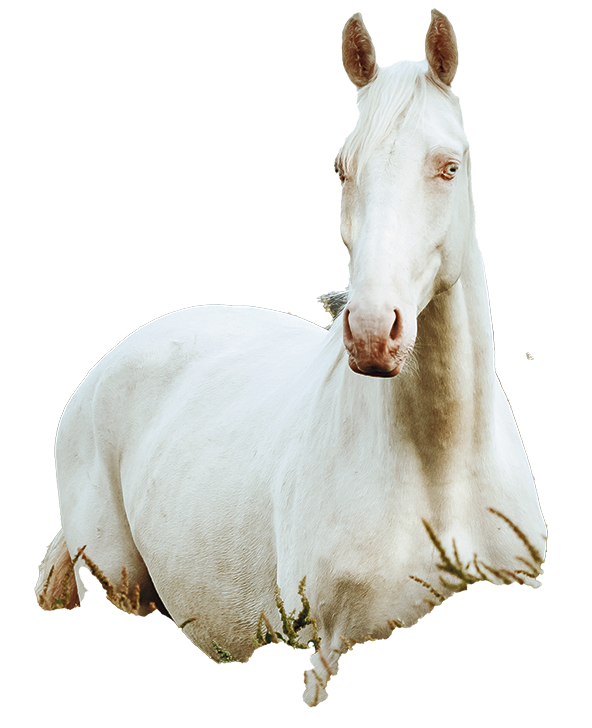


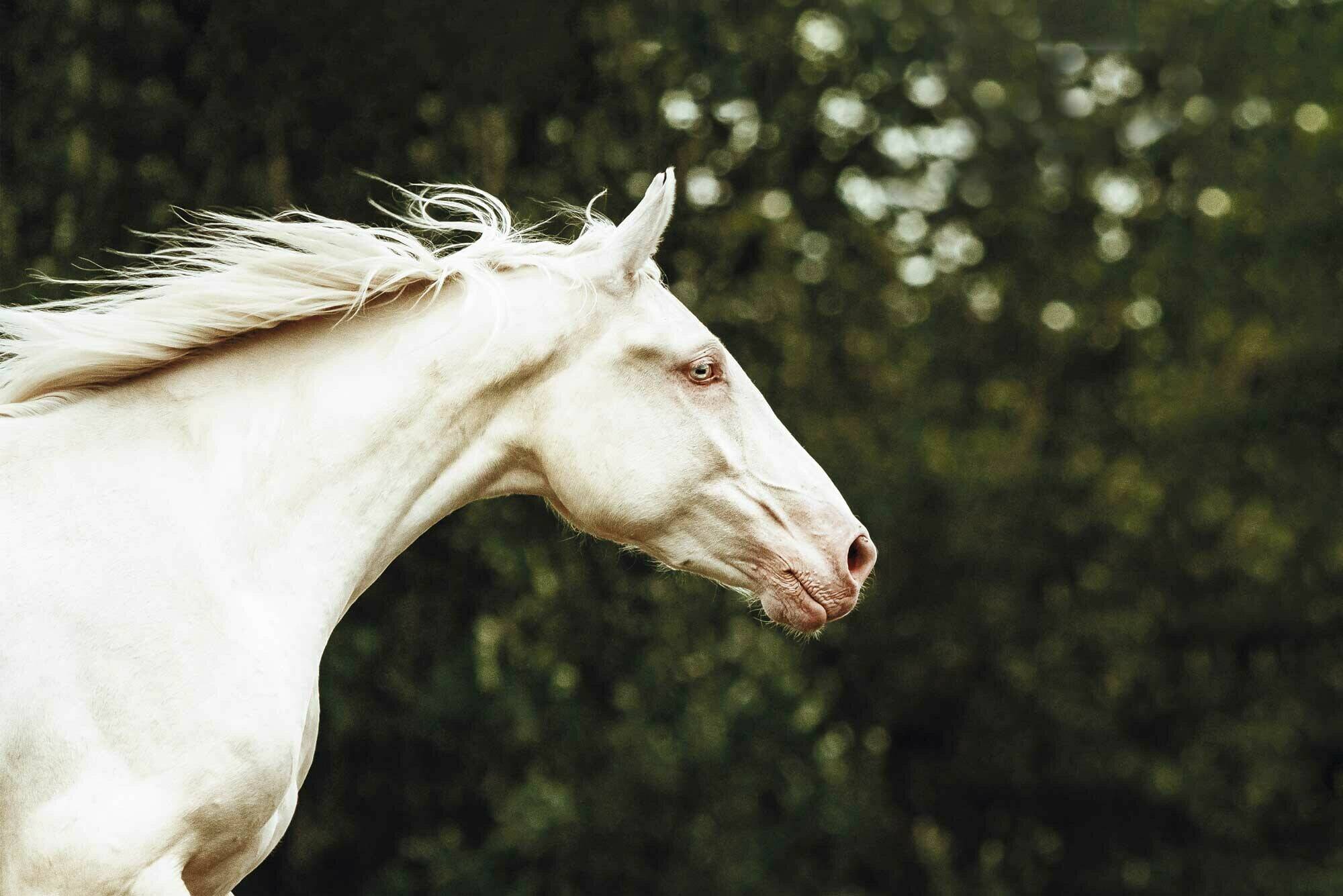


A walk in the woods can be a wonderful break from the daily training in the riding hall or in the riding arena, but unfortunately there’s a risk of bringing uninvited guests back home with you after a good walk in the woods. Spring and summer are not just the season for horseback riding outside. Unfortunately, it is also the season for ticks and potentially the damaging disease borrelia as well.
Symptoms hard to point out
The symptoms of Lyme disease can be difficult to point out. Often there will be symptoms that also could be trigged from other things. Therefore, it is not so straightforward to say whether your horse has been exposed to Lyme disease from a tick bite. In addition, the tick bite itself will rarely hurt.
Watch vetenarian Dr. Lydia Gray talk to the brand SmartPak about Lyme disease in horses and how the symptoms show up.
Treatment of tick bites
If you are unlucky and your horse has been bitten by a tick, remove it as soon as possible and then keep an eye on inflammation-like conditions around the bite. It can take several weeks before this inflammation goes away on its own again.
If your horse has borrelia from the tick bite, the treatment will consist of a course of antibiotics and the horse should be closely monitored by a veterinarian.
If your horse receives the right treatment in time, it can easily be okay after infection with Lyme disease, although there will always be a risk that the clinical symptoms will return despite the good effect of the treatment. Therefore, you should always consult your veterinarian if you suspect that your horse has Lyme disease – the veterinarian will be able to advise both during and in the time after.
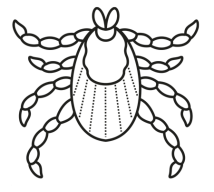
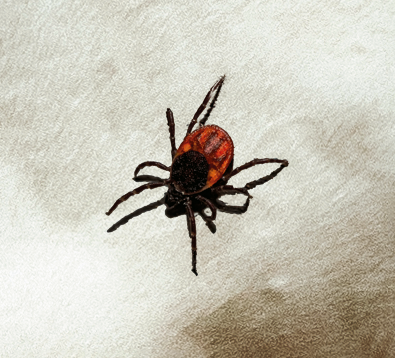
Did you know? You should never try to remove the tick with oil, vaseline or margarine. This can cause the tick to empty its stomach contents, and this increases the risk of transmitting Lyme disease – and other tick-borne diseases – to your horse. Also, do not try to freeze or burn a tick away as this will have the same effect.
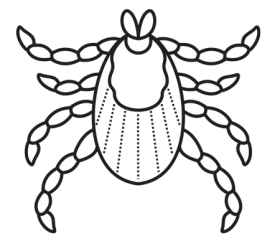
Sources
Firstvet: Flåter og heste
Agria: Heste kan også blive ramt af flåtbårne sygdomme
Catago: Da drømmehesten fik borrelia
How to remove the tick
If you are unlucky enough to find a tick on your horse, you should preferably use a tick remover, as this helps to ensure that you remove the tick correctly. You must never just pull a tick out of either horses or humans. When the tick bites, it will drill its mouth parts through the skin, and therefore the tick must be removed correctly. If you are absolutely sure that the tick has come out properly, you can put some bactericidal on the bite and keep an eye on the area.
Symptoms of Lyme disease
The symptoms of a tick bite will often start with redness and swelling around the place where the tick has bitten, and this can spread to other places on the horse. This will show up in the days and weeks after a bite.
Some places to avoid
To elude ticks, you can consider avoiding hacking in forest areas during spring and autumn, which is high season for ticks. You can also get various insecticides, which can at least help to keep the ticks at a distance. These should preferably be sprayed or lubricated in the areas that are particularly exposed – including the abdomen and legs, for example, which will be in close contact with tall grass and the like. Feel free to apply insect repellent at regular intervals, to make sure that it works correctly.
In addition, you can also think about where your horse's pasture is located. Moist meadow areas with many trees and shrubs are ideal conditions ticks. Therefore, be sure to fence the moist areas and remove larger plantings on the fold. If possible, you can try to keep deer away from the pasture as these can carry around ticks.
What can you do?
You know your horse, and you should always react if your horse suddenly changes behavior. If the change occurs during the tick season, you may want to check your horse for ticks.
Unfortunately, there is no vaccine or other miracle cure that can keep ticks away and thus prevent tick bites. The best advice is therefore that you check your horse regularly for ticks when these are in season – and have the ticks removed as soon as possible if you find them on your horse. Ticks will typically seek out the hot, dark and humid spots on your horse. Therefore, you can often find them in the ears, under the jaw, under the mane or between the legs. These are also all places where the horse's skin is relatively thin, and it is therefore easier for the tick to bite.
Since a tick is relatively small, the best advice is to feel the skin of your hose with your bare hands, as it can be harder to spot with the naked eye. Feel for small dents or bumps in the fur of your horse, as these can reveal a tick.
Blood test and exclusion method
As a horse owner, you know that there can be many reasons why your horse changes behavior or for example becomes lame, which are some of the well-known symptoms of Lyme disease. Therefore, it can be difficult to assess what the behavioral changes are due to.
A blood test will be able to show if your horse has been infected with Lyme disease, but it will not be able to confirm an active infection. Therefore, the exclusion method will also be an aid in assessing whether it is Lyme disease or something else.
How is the horse infected?
It is the tick that carries the infection, and it can be passed on to the horse. Infection with Lyme disease usually occurs if the tick has been sitting on your horse for about 24 hours. A tick can neither jump nor fly, but it crawls from one animal – or human – to another. Once they have sucked blood here, they will fall to the ground where they either lay eggs or find a new victim to suck blood. Most often, you will not the tick bite itself. This is because the tick's saliva contains anesthetic, which means that the bite will not hurt – it may itch quite a bit, and therefore it is not always that you feel it right at the moment when a tick bites you or your horse. If an infected tick is allowed to sit on either humans or animals, its bite can thus develop into borrelia.
What is a deer tick?
There are several kinds of ticks, but only the deer tick carries Lyme disease. Some ticks are harmless and herbivorous insects, where a deer tick is a small black or reddish-brown arthropod. It is related to both mites and spiders, and it is related to the spiders. Where a tick resembles a beetle and has six legs, a deer tick has eight legs.
A deer tick lives for between two and three years, where it develops from a larva the size of a tenth of a millimeter to about three millimeters as an adult. It may seem completely unthinkable that such a small animal can do as much damage to a giant animal as a horse. Nevertheless, the little animal must be taken very seriously – with horses as well as with humans.
What is Lyme disease?
Lyme disease is an infection that is carried by ticks and is a bacterium – however, it is far from all ticks that carry the infection. The infection is caused by the bacteria borrelia burgdoferi. It is an extremely serious and chronic inflammatory disease, which affects up to several of the horse’s organs and its general well-being. Borrelia will travel through the blood of the horse and it can cause local inflammatory reactions all over most of its body. Therefore, it can also be difficult for a veterinarian to assess whether your horse has been affected by Lyme disease.
- Decreased appetite and possible weight loss
- A slight lameness, which changes from leg to leg
- Fever and general lethargy
- Lack of desire to move
- Very sensitive
- Stiffness in the muscles – especially during riding
- Poorer balance and possible neurological disorders
- Borrelia can also develop into eye inflammation
After this, the clinical symptoms will develop if your horse has borrelia:

- Decreased appetite and possible weight loss
- A slight lameness, which changes from leg to leg
- Fever and general lethargy
- Lack of desire to move
- Very sensitive
- Stiffness in the muscles – especially during riding
- Poorer balance and possible neurological disorders
- Borrelia can also develop into eye inflammation
After this, the clinical symptoms will develop if your horse has borrelia:
Symptoms of Lyme disease
The symptoms of a tick bite will often start with redness and swelling around the place where the tick has bitten, and this can spread to other places on the horse. This will show up in the days and weeks after a bite.
Symptoms hard to point out
The symptoms of Lyme disease can be difficult to point out. Often there will be symptoms that also could be trigged from other things. Therefore, it is not so straightforward to say whether your horse has been exposed to Lyme disease from a tick bite. In addition, the tick bite itself will rarely hurt.
Can do great damage
Despite their size, ticks can do great damage to horses as well as humans. Ticks thrive particularly well in slightly humid environments, where it is not too hot and shady – for example a forest, but bogs and meadow also provide good living conditions for ticks. The small creatures are often to be foundin tall grass, where they feed onblood from other animals – unfortunately including humans and horses.
Once a tick carries the borrelia bacterium, the tick can easily pass it on to animals as well as humans. It sucks blood from the host animal and can then potentially transmit the bacterium further from here to another animal – for example horses.
It is important to emphasize that a tick bite in itself is rarely a problem, as there is no guarantee that the tick will carry Lyme disease. It will often take many tick bites before it will affect a horse in any other way, if the tick does not carry Lyme disease.
A walk in the woods can be a wonderful break from the daily training in the riding hall or in the riding arena, but unfortunately there’s a risk of bringing uninvited guests back home with you after a good walk in the woods. Spring and summer are not just the season for horseback riding outside. Unfortunately, it is also the season for ticks and potentially the damaging disease borrelia as well.

What is Lyme disease?
Lyme disease is an infection that is carried by ticks and is a bacterium – however, it is far from all ticks that carry the infection. The infection is caused by the bacteria borrelia burgdoferi. It is an extremely serious and chronic inflammatory disease, which affects up to several of the horse’s organs and its general well-being. Borrelia will travel through the blood of the horse and it can cause local inflammatory reactions all over most of its body. Therefore, it can also be difficult for a veterinarian to assess whether your horse has been affected by Lyme disease.
Borrelia is a disease that can be difficult to identify. Often one cannot figure out what is wrong with the horse, but you can just see that something is wrong. There are in fact many different symptoms that may resemble the symptoms of other disorders besides Lyme disease.
By Tina Bjerre Nielsen // Photo: Victoria Binder Photography




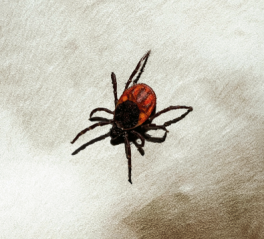
How to remove the tick
If you are unlucky enough to find a tick on your horse, you should preferably use a tick remover, as this helps to ensure that you remove the tick correctly. You must never just pull a tick out of either horses or humans. When the tick bites, it will drill its mouth parts through the skin, and therefore the tick must be removed correctly. If you are absolutely sure that the tick has come out properly, you can put some bactericidal on the bite and keep an eye on the area.
About the photographer
Website: VictoriaBinderPhotography.com
Facebook: @VictoriaBinderPhotography
Instagram: @Victoriaphotographing
Sources
Firstvet: Flåter og heste
Agria: Heste kan også blive ramt af flåtbårne sygdomme
Catago: Da drømmehesten fik borrelia
Treatment of tick bites
If you are unlucky and your horse has been bitten by a tick, remove it as soon as possible and then keep an eye on inflammation-like conditions around the bite. It can take several weeks before this inflammation goes away on its own again.
If your horse has borrelia from the tick bite, the treatment will consist of a course of antibiotics and the horse should be closely monitored by a veterinarian.
If your horse receives the right treatment in time, it can easily be okay after infection with Lyme disease, although there will always be a risk that the clinical symptoms will return despite the good effect of the treatment. Therefore, you should always consult your veterinarian if you suspect that your horse has Lyme disease – the veterinarian will be able to advise both during and in the time after.

Did you know? You should never try to remove the tick with oil, vaseline or margarine. This can cause the tick to empty its stomach contents, and this increases the risk of transmitting Lyme disease – and other tick-borne diseases – to your horse. Also, do not try to freeze or burn a tick away as this will have the same effect.
Some places to avoid
To elude ticks, you can consider avoiding hacking in forest areas during spring and autumn, which is high season for ticks. You can also get various insecticides, which can at least help to keep the ticks at a distance. These should preferably be sprayed or lubricated in the areas that are particularly exposed – including the abdomen and legs, for example, which will be in close contact with tall grass and the like. Feel free to apply insect repellent at regular intervals, to make sure that it works correctly.
In addition, you can also think about where your horse's pasture is located. Moist meadow areas with many trees and shrubs are ideal conditions ticks. Therefore, be sure to fence the moist areas and remove larger plantings on the fold. If possible, you can try to keep deer away from the pasture as these can carry around ticks.
What is a deer tick?
There are several kinds of ticks, but only the deer tick carries Lyme disease. Some ticks are harmless and herbivorous insects, where a deer tick is a small black or reddish-brown arthropod. It is related to both mites and spiders, and it is related to the spiders. Where a tick resembles a beetle and has six legs, a deer tick has eight legs.
A deer tick lives for between two and three years, where it develops from a larva the size of a tenth of a millimeter to about three millimeters as an adult. It may seem completely unthinkable that such a small animal can do as much damage to a giant animal as a horse. Nevertheless, the little animal must be taken very seriously – with horses as well as with humans.

What can you do?
You know your horse, and you should always react if your horse suddenly changes behavior. If the change occurs during the tick season, you may want to check your horse for ticks.
Unfortunately, there is no vaccine or other miracle cure that can keep ticks away and thus prevent tick bites. The best advice is therefore that you check your horse regularly for ticks when these are in season – and have the ticks removed as soon as possible if you find them on your horse. Ticks will typically seek out the hot, dark and humid spots on your horse. Therefore, you can often find them in the ears, under the jaw, under the mane or between the legs. These are also all places where the horse's skin is relatively thin, and it is therefore easier for the tick to bite.
Since a tick is relatively small, the best advice is to feel the skin of your hose with your bare hands, as it can be harder to spot with the naked eye. Feel for small dents or bumps in the fur of your horse, as these can reveal a tick.

Blood test and exclusion method
As a horse owner, you know that there can be many reasons why your horse changes behavior or for example becomes lame, which are some of the well-known symptoms of Lyme disease. Therefore, it can be difficult to assess what the behavioral changes are due to.
A blood test will be able to show if your horse has been infected with Lyme disease, but it will not be able to confirm an active infection. Therefore, the exclusion method will also be an aid in assessing whether it is Lyme disease or something else.
How is the horse infected?
It is the tick that carries the infection, and it can be passed on to the horse. Infection with Lyme disease usually occurs if the tick has been sitting on your horse for about 24 hours. A tick can neither jump nor fly, but it crawls from one animal – or human – to another. Once they have sucked blood here, they will fall to the ground where they either lay eggs or find a new victim to suck blood. Most often, you will not the tick bite itself. This is because the tick's saliva contains anesthetic, which means that the bite will not hurt – it may itch quite a bit, and therefore it is not always that you feel it right at the moment when a tick bites you or your horse. If an infected tick is allowed to sit on either humans or animals, its bite can thus develop into borrelia.
